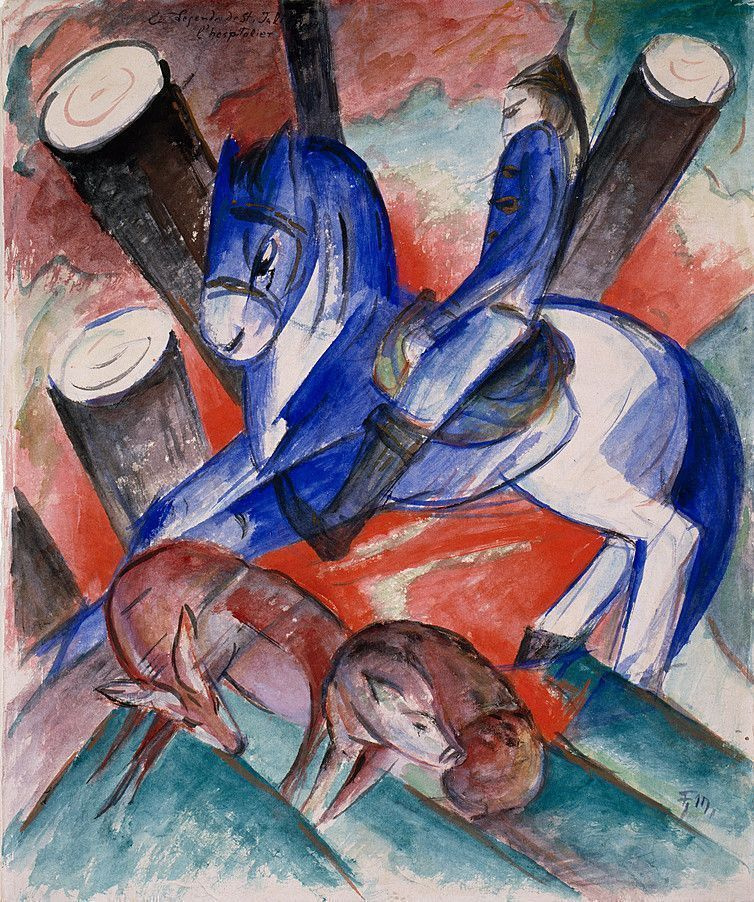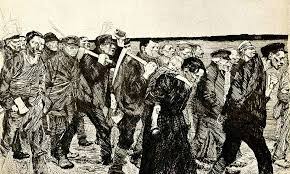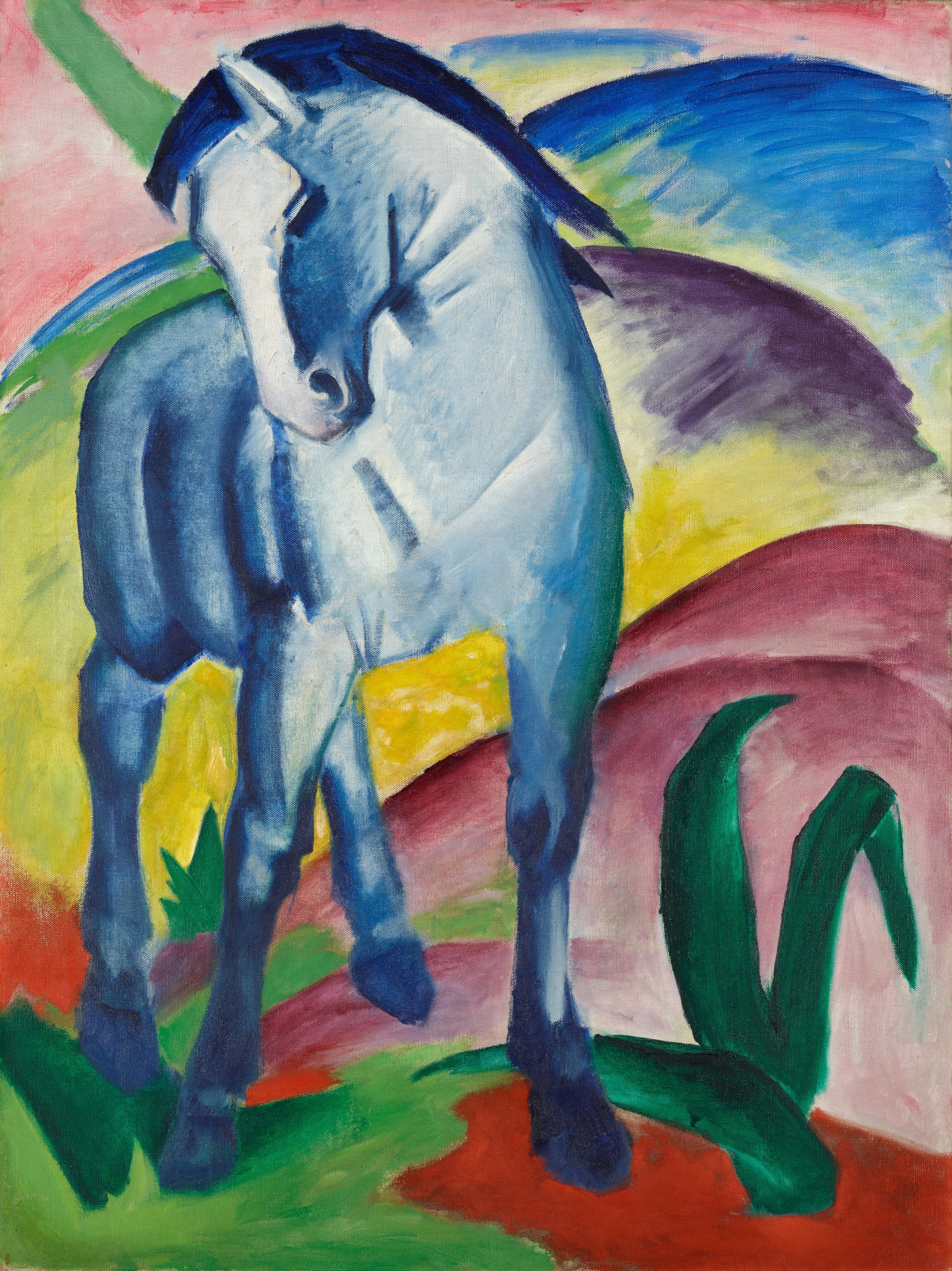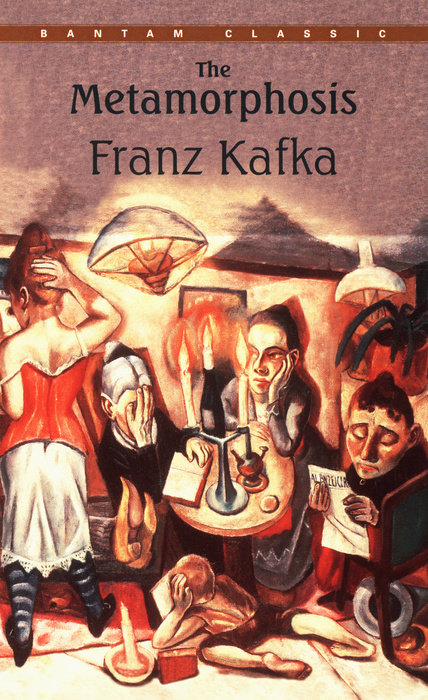German Expressionism: A Cultural Revolution in Art and Beyond
- Die Brücke and Der Blaue Reiter – Uniting Forces in Art
- Paula Modersohn-Becker's Contribution to German Expressionism
- The Other Influential Artists
- The Impact of German Expressionism on Painting and Sculpture
- Expressionism in Films
- The Transformative Power of German Expressionist Architecture
- German Expressionist Literature and Its Legacy
- Expressionism in Dance
Expressionism emerged as a powerful and influential movement in early 20th-century art, characterized by its emphasis on emotional expression and the subjective interpretation of the world. Rather than focusing on realistic depictions, Expressionist artists sought to convey their personal feelings and responses to subjects through distorted, exaggerated forms, and vibrant, often shocking colors. This movement spanned various disciplines, including painting, literature, theatre, film, and architecture, and lasted roughly from the early 1900s to the 1930s.
German Expressionism, a significant branch of the broader Expressionist movement, played a crucial role in developing modern art and culture in Germany. It was marked by a fascination with the darker, more irrational aspects of the human psyche and a rebellion against the established norms of the time. German Expressionism divided into two main groups: Die Brücke ("The Bridge") founded in Dresden in 1905, and Der Blaue Reiter ("The Blue Rider") established in Munich in 1911. These groups included artists like Ernst Ludwig Kirchner, Emil Nolde, Wassily Kandinsky, and Franz Marc, who sought to explore inner emotions and ideas rather than realistic depictions.
Artists of the German Expressionist movement drew their inspiration from a variety of sources including mysticism, medieval themes, primitivism, and the philosophical musings of Nietzsche. Their primary goal was to provoke strong emotional responses through their art, employing vivid colors and sharp brushwork to challenge the conventional norms of beauty and simplicity in art. They aimed to break free from the constraints of bourgeois society, venturing into bold explorations of color, simplified forms, and the celebration of sexual freedom in their creations.
The article will discuss German Expressionism in all of its forms, from its revolutionary influence on visual arts to its important contributions to film, particularly in the form of noticeable visually striking pictures that captured the chaos and pain of the time. Through its representatives and their creations, German Expressionism left an indelible mark on the course of modern art.
Die Brücke and Der Blaue Reiter – Uniting Forces in Art
Die Brücke and Der Blaue Reiter represent two pivotal groups within the German Expressionist movement, each playing a distinct role in the evolution and dissemination of Expressionism in the early 20th century. Despite their different approaches and philosophies, both groups shared a common goal: to break away from traditional art forms and convey deeper emotional realities through bold colors, innovative techniques, and subjective interpretations.
Die Brücke (The Bridge), founded in 1905 in Dresden by four architecture students, Ernst Ludwig Kirchner, Fritz Bleyl, Erich Heckel, and Karl Schmidt-Rottluff, aimed to establish a "bridge" to the future of art. They sought to reject the conservative norms of the time, embracing instead a raw, emotional expression through stark lines, vivid colors, and themes that delved into the human psyche, nature, and sexuality. The group was known for its communal living, shared studios, and the belief that art could be a revolutionary force in society. Their work often depicted urban life, the human body in its most natural state, and landscapes, all characterized by a sense of immediacy and intensity.

Der Blaue Reiter (The Blue Rider) 1911
Der Blaue Reiter (The Blue Rider) emerged in 1911 in Munich, co-founded by Wassily Kandinsky and Franz Marc. This group was less about a cohesive stylistic approach and more about the spiritual and symbolic content of art. They believed that color and form could convey spiritual values and sought to transcend the visual world for deeper spiritual truths. Der Blaue Reiter was more international in its composition and influences, drawing on a range of cultural art forms, including Russian folk art, medieval and Renaissance painting, and contemporary French art. The group's work is noted for its abstraction, an emphasis on the spiritual dimension of art, and the use of color to evoke emotion rather than to depict the physical world accurately.
While Die Brücke disbanded with the onset of World War I, Der Blaue Reiter also saw its activities curtailed by the war. However, the legacies of both groups have been profound, influencing not only the development of modern art in Europe but also the course of art history worldwide. Their explorations of color, form, and emotion laid the groundwork for later movements, including Abstract Expressionism and Surrealism, demonstrating the enduring power and relevance of their innovative visions.
Paula Modersohn-Becker's Contribution to German Expressionism

Paula Modersohn-Becker "Self-Portrait" 1906
Paula Modersohn-Becker, born in 1876 stands as an important figure in the German Expressionist movement. Notably, she shattered conventional barriers as the first woman artist to create nude self-portraits, marking a bold departure from the norms of her time. Despite her tragically brief lifespan of just 31 years, Modersohn-Becker's prolific output included over 700 paintings and more than 1000 drawings, a testament to her unyielding dedication to her craft.
Her work underwent a significant transformation following her sojourns to Paris, the then-epicenter of the avant-garde, where she encountered the vivid hues and dynamic brushstrokes of luminaries such as Cézanne, Gauguin, and Van Gogh. These experiences enriched her palette and emboldened her stylistic experimentation, propelling her towards the forefront of the Expressionist movement in Germany. Modersohn-Becker's artistry is characterized by a raw, emotional intensity, with a focus on simple, yet profound subjects including motherhood, self-exploration, and the essence of human experience, rendered through a lens that is both deeply personal and universally resonant.
Her pioneering use of bold, unmodulated colors and a tendency to flatten forms to convey depth and emotion marked a significant deviation from the naturalistic styles prevalent at the turn of the century. Modersohn-Becker's portraits, particularly her self-portraits, are celebrated for their unapologetic honesty and the direct gaze that seems to challenge the viewer, inviting introspection.
The Other Influential Artists

Käthe Kollwitz
German Expressionism, beyond the influential circles of Die Brücke and Der Blaue Reiter, boasted a diverse array of artists who contributed significantly to its development and legacy. Otto Dix and George Grosz critiqued the social and political turmoil of post-World War I Germany through biting, satirical works, highlighting the grotesque realities of war and its impact on society. Käthe Kollwitz, with her poignant etchings and lithographs, focused on the sufferings of the working class and the horrors of war, combining Expressionist techniques with a deeply humanitarian message. August Macke and Gabriele Münter, though often associated with Der Blaue Reiter, offered unique perspectives through their exploration of color and form, blending Expressionist tendencies with elements of Fauvism and Cubism. These artists, along with many others, enriched German Expressionism with their individual voices, collectively contributing to a movement that reshaped the landscape of 20th-century art.
The Impact of German Expressionism on Painting and Sculpture

Franz Marc "Blue Horse I"
Franz Marc, a pivotal figure in German Expressionism, is celebrated for his vivid, spiritually charged animal paintings like "Blue Horse I," symbolizing harmony with nature. Consequently, Marc's use of color and abstract forms sought to convey deeper emotional truths, influencing the path of modern art towards abstraction.

Vassily Kandinsky, 1913 - Composition
Similarly, Wassily Kandinsky, often credited as a pioneer of abstract art, explored the emotional power of color and form in groundbreaking works such as "Composition VII" and "The Blue Rider." Furthermore, his theoretical writings and paintings laid the foundation for abstract expression, emphasizing art's ability to evoke spiritual resonance.

Ernst Ludwig Kirchner "Street, Dresden" 1906
In contrast, Ernst Ludwig Kirchner, a founding member of Die Brücke, depicted the anxieties of modern life through works like "Street, Dresden." Moreover, his expressive use of color and form challenged traditional aesthetics, contributing significantly to the development of Expressionism with his introspective and often unsettling portrayal of urban and natural scenes.
Likewise, Paul Klee, associated with both Expressionism and Bauhaus, brought a whimsical and metaphysical approach to painting, evident in "Twittering Machine." Additionally, his innovative techniques and exploration of color theory enriched modern art, influencing both painting and teaching practices with his blend of abstraction and figuration.
Together, these artists expanded the boundaries of painting and sculpture, introducing innovative approaches that emphasized emotional expression, abstraction, and the exploration of spiritual and psychological depths, leaving a lasting impact on the trajectory of 20th-century art.
Expressionism in Films

Robert Wiene's "The Cabinet Of Dr. Caligari" (1920)
German Expressionism in films emerged in the early 20th century, marked by a distinctive visual style that sought to externalize inner emotions and psychological states. This movement gave rise to some of cinema's most innovative and visually striking works, profoundly influencing the development of film noir, horror, and avant-garde cinema.
Key representatives of German Expressionist cinema include directors such as Fritz Lang, whose masterpiece "Metropolis" (1927) is celebrated for its futuristic imagery and critique of modern society. F.W. Murnau, with "Nosferatu" (1922), introduced haunting visual storytelling and innovative use of shadows, creating a template for future horror films. Robert Wiene's "The Cabinet of Dr. Caligari" (1920) is another seminal work, featuring twisted landscapes and distorted sets that visually manifest the characters' mental states. Distinctive features of German Expressionist films include stark, high-contrast lighting, exaggerated sets and architecture designed to evoke emotional responses, and themes exploring madness, betrayal, and other dark aspects of the human psyche. The movement's legacy is its contribution to the visual language of cinema, demonstrating how stylistic choices in lighting, set design, and composition can deeply influence narrative and atmosphere, leaving an indelible mark on film history.
The Transformative Power of German Expressionist Architecture

Glass Pavilion, 1914 By Bruno Taut
German Expressionism in architecture was a transformative movement that emerged in the early 20th century, characterized by its departure from traditional forms and its embrace of emotional intensity and symbolic meaning. This architectural style is noted for its innovative use of materials, organic and dynamic shapes, and the desire to express the inner feelings of humanity through built form.
Key representatives include Erich Mendelsohn, whose Einstein Tower in Potsdam exemplifies the movement's fluid, sculptural lines that seem to defy gravity and traditional construction methods. Bruno Taut's Glass Pavilion, built for the 1914 Werkbund Exhibition, showcased the potential of glass in architecture, creating a structure of light and color that embodied utopian ideals. What made German Expressionist architecture special was its emphasis on expressing emotional experience and the use of avant-garde materials and construction techniques to achieve this. The movement sought to create a total work of art that integrated architecture, painting, and sculpture, aiming to uplift society and reflect a new cultural epoch. The influence of German Expressionism in architecture can be seen in the later development of modernist movements, such as Futurism and Constructivism, and its principles can be traced in contemporary architecture's exploration of form and space. Its legacy lies in its challenge to conventional aesthetics and its pioneering spirit, which opened new possibilities for architectural expression and the emotional impact of buildings.
German Expressionist Literature and Its Legacy

The Metamorphosis By Franz Kafka
German Expressionism in literature, flourishing in the early 20th century, was marked by its intense exploration of the human psyche, emotional extremities, and a stark rejection of realism in favor of symbolic and often abstract presentation. This literary movement sought to capture the existential angst and disillusionment of the era, reflecting the turmoil and rapid changes in society following industrialization and the First World War. Notable representatives include Franz Kafka, whose surreal, labyrinthine narratives in works like "The Metamorphosis" and "The Trial" delve into the absurdity and existential dread of modern life. Georg Trakl’s poetry, laden with imagery of decay and redemption, captures the movement's characteristic preoccupation with inner turmoil and the darker aspects of the human condition. Else Lasker-Schüler’s lyrical and emotive poetry and plays contributed significantly to the expression of spiritual and emotional distress, utilizing vivid imagery and unconventional structure. What made German Expressionist literature remarkable was its innovative use of language and form to express deep psychological and existential themes. Authors broke from traditional storytelling techniques, employing fragmented narrative structures, stream of consciousness, and dense symbolic imagery to evoke a visceral response in the reader, making it a pivotal movement in the evolution of modernist literature.
Expressionism in Dance

Hilda Holger, 1926.
Expressionism's influence extended into the realm of dance, serving as a vibrant protest against artistic stagnation and the traditional conventions of ballet. Known in Germany as Ausdruckstanz, or "expressive dance," this innovative form prioritized the art of movement to convey deeper levels of spirit and emotion. Central to its philosophy was the role of improvisation, allowing dancers to explore and express their innermost feelings and thoughts through spontaneous, unscripted movements. This emphasis on personal expression and emotional depth marked a significant departure from the structured and often restrained forms of classical ballet, heralding a new era where dance became a dynamic medium for exploring human psychology and societal themes.
Hertha Feist contributed significantly with her emphasis on improvisation and the use of space as a means to express inner emotions, pioneering new forms of movement that challenged conventional aesthetics. Clotilde von Derp, known for her expressive dance performances, played a crucial role in the spread of Expressionist dance across Europe with her innovative choreography and captivating stage presence. Hilde Holger, a visionary in the realm of expressionist dance, incorporated elements of Eastern dance forms to push the boundaries of expression and movement in Western dance traditions. Mary Wigman, perhaps one of the most influential figures in Expressionist dance, revolutionized the art form with her dramatic solos, exploring themes of fear, passion, and ecstasy, thus laying the groundwork for modern dance. Jo Mihaly, with her dynamic performances and autobiographical works, brought a narrative and deeply personal dimension to Expressionist dance, highlighting the social and political potentials of the medium.
Together, these artists transformed dance into an avant-garde expression of the era's tumultuous spirit, using their bodies to explore and convey the complexities of human emotion and experience, leaving a lasting legacy on the world of dance.
The legacy of German Expressionism endures as a testament to the movement's revolutionary impact across art, literature, film, and dance. Its emphasis on emotional depth, abstraction, and the exploration of the human psyche paved the way for subsequent avant-garde movements, influencing the development of modern art and culture. German Expressionism's bold departure from realism and traditional forms challenged and expanded the boundaries of artistic expression, leaving an indelible mark on the way we interpret and engage with the world around us.
No Comments Yet...